I’m quite fond of the black-capped chickadees that come and go around my birdfeeders at my house in Red Lodge, Montana. They’re polite, too, approaching a feeder one at a time, daintily taking a sunflower seed, then flying to a nearby branch to make room for the next hungry one.
Last summer, while watching the chickadees in my backyard, I saw one that looked a little different. It had a white streak over its eye. A quick look in my dog-eared Birds of North America, revealed the interloper to be a mountain chickadee, a close cousin of the black-capped chickadee. The mountain chickadee lives in the western United States at higher elevations and is more at home in conifers than the deciduous aspen trees surrounding my house.
My curiosity led me to Arch McCallum, a retired biology professor at the College of Charleston in South Carolina, who did his dissertation on mountain chickadees and was the lead expert on the species for Birds of North America.
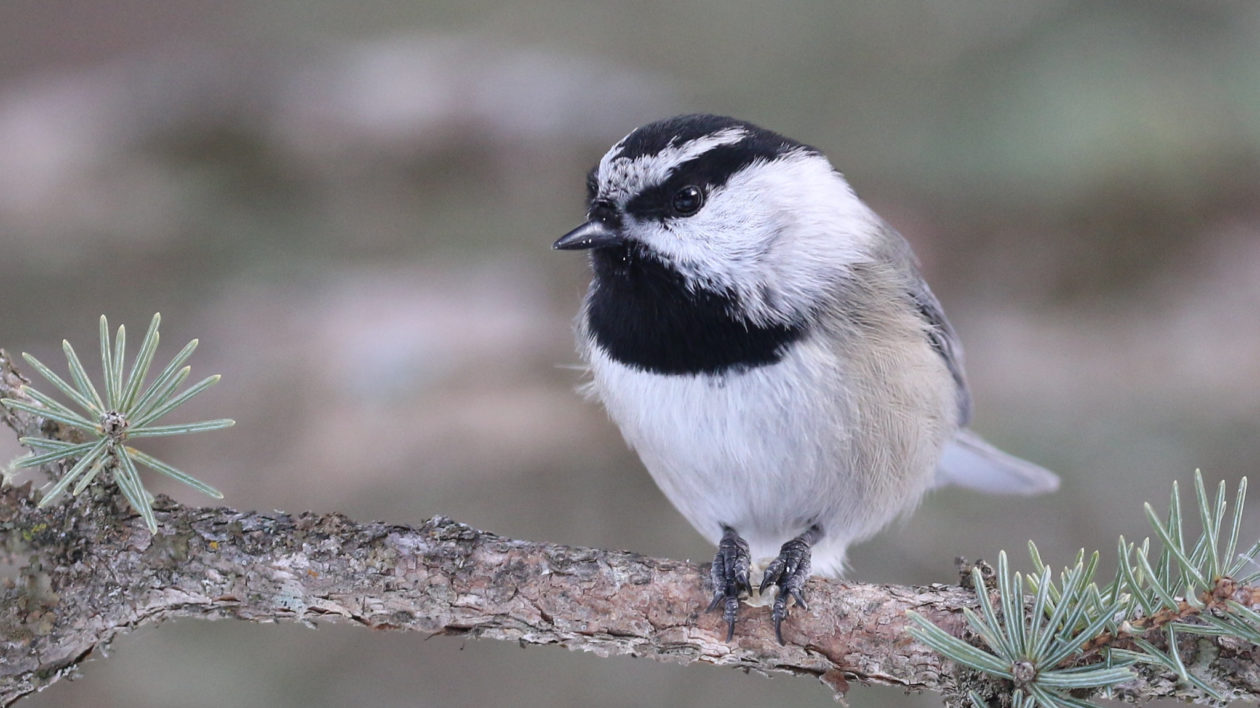
Bonkers Over Pinyon Nuts
Given that I has seen the mountain chickadee at my birdfeeder, my conversation with McCallum started with what mountain chickadees eat. His short answer was both insects and seeds. Given their appetite for bugs and the fact that they live in pine forests, I then wondered aloud if they helped control pests, like pine beetles.
“No, but it’s a bonanza for mountain chickadees when there’s an outbreak,” said McCallum, who once watched a mountain chickadee peck at the base of a pinyon-pine needle and pull out the grub of a gall wasp.
According to McCallum, mountain chickadees also go bonkers over pinyon nuts, even though the cone of a pinyon tree (2 inches long) is half the size of the bird.
“Mountain chickadees hold a seed between their toes, then peck at it, not brutally, but on the seam,” explains McCallum. “When the seed opens, there’s a wonderful piece of food inside, which it caches in the bark of a tree or on the ground. They have good spatial memory, too, probably because they depend on seed-caching to survive. I’ve seen them fly straight to a place under a tree and pull out a seed.”
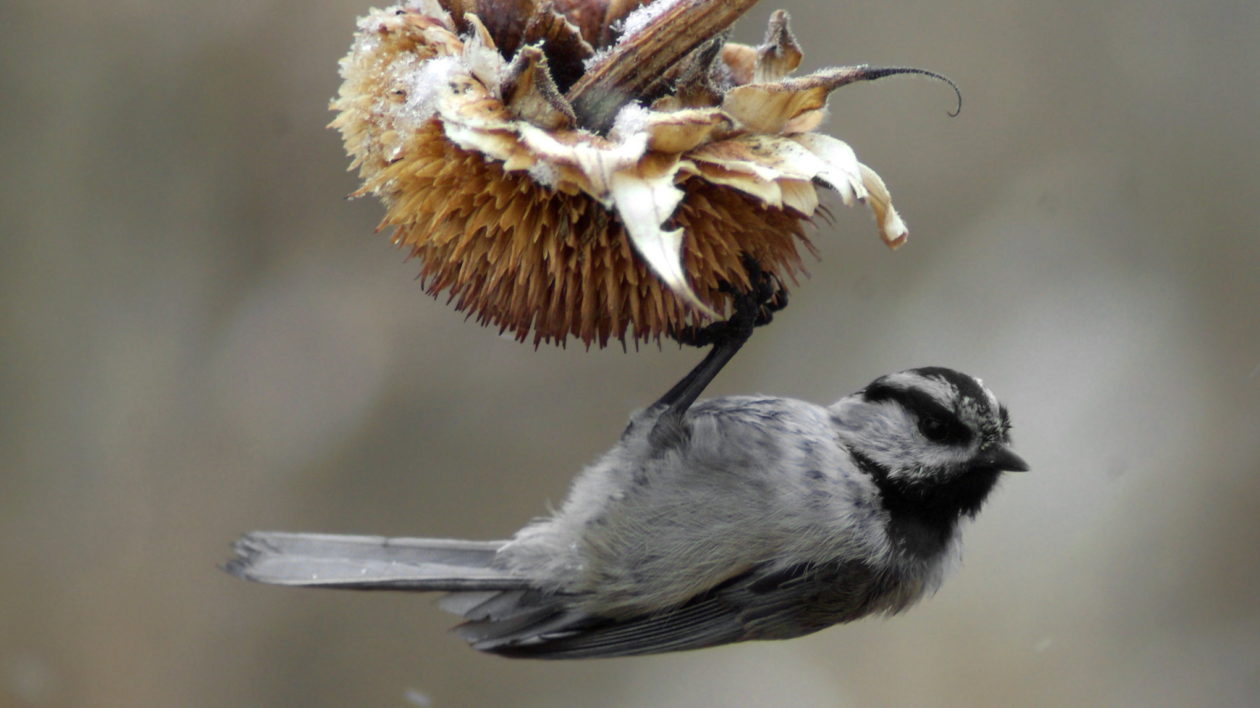
A Backyard Cache
Turns out, mountain chickadees will cache in your backyard, too, usually the sunflower seeds they’ve nabbed from a nearby birdfeeder. Though they might come around any time of the day, late afternoon is prime time to observe them.
“Mountain chickadees need to add fat to their diet at the end of the day to get through the night, especially when it’s cold,” explains McCallum, “They fluff up, but shivering is critical. Shivering generates body heat. They need fat to do that, so they grab a lot of food just before they go to bed. If you see a dead mountain chickadee after a cold night, it didn’t get enough fat at the end of the day.”
Warning Calls
Raptors, particularly northern pygmy owls and sharp-shinned hawks, are the main predators of these cute, little songbirds, which flock with other bird species to better detect and scare off predators.
“Red-breasted nuthatches can decode a mountain chickadee’s predator response,” says McCallum. “If a pygmy owl sits and waits near a flock, the chickadees will scold it, adding more dee’s to their call the angrier they get, which warns the rest of the flock. However, if the owl flies, which is really dangerous, the chickadees make a high-pitched shriek that means ‘freeze’. If you throw a frisbee, you can get a mountain chickadee to do the same thing.”
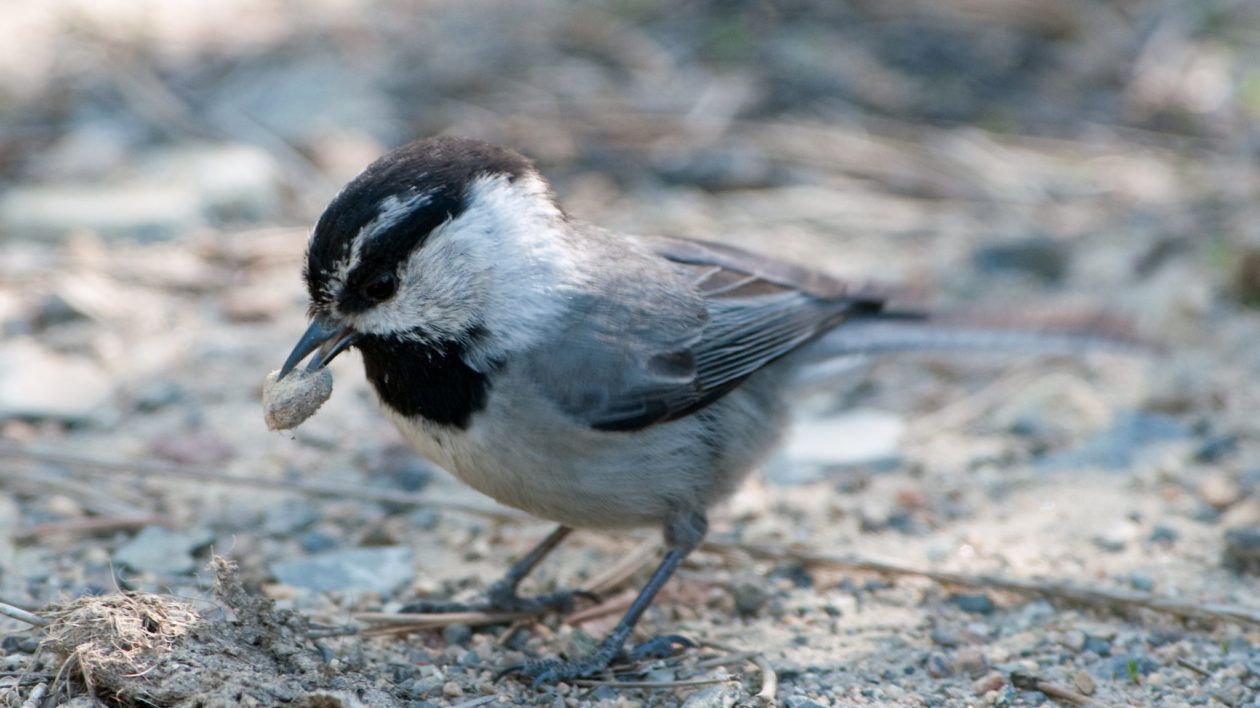
Flock Dominance
Excluding other bird species, flocks of mountain chickadees typically contain three nesting pairs plus several juveniles, which are not their young. The only time mountain chickadees migrate is after fledging, when they disperse from their parents to other flocks (though food shortages will also push them temporarily downslope).
Within a flock, the oldest male is Napoleon. He pairs with the oldest female. The second oldest male pairs with the second oldest female and so forth. Likewise, the oldest male eats first, then the rest of the males in order of dominance, then the females in a similar hierarchy.
“To claim dominance, a mountain chickadee darts or hisses at the other bird, or it’s revealed by those who hang back around a feeder,” says McCallum. “The neat thing about mountain chickadees is that they get a seed, then take it somewhere else to work on it, leaving the feeder free for the next bird.”
Sex in the Forest
McCallum is careful to use the words “pairs with” to describe two mountain chickadees that nest together. But that doesn’t mean 100 percent devotion to each other, well, as far as the females are concerned. There’s a lot of infidelity in the bird world, and mountain chickadees are no exception.
“A male chickadee will perch on the top of its nest tree, singing before dawn, which gives the female the opportunity to slip away to acquire extra paternity,” says McCallum. “The oldest female doesn’t do this. She’s already got the best guy, but the younger females are optimizers.”
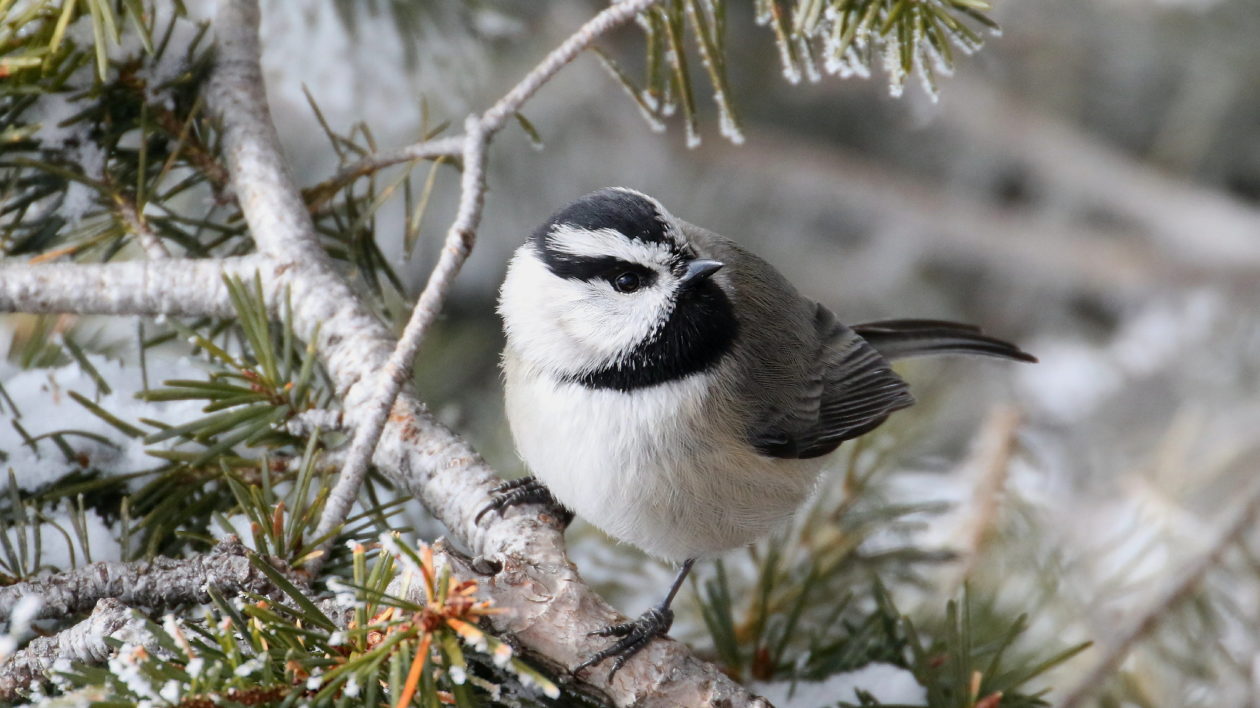
On the Nest
Mountain chickadees are cavity nesters, laying from five to a dozen eggs per clutch. A female will start incubating her eggs after she lays the second to last one.
Once they hatch, the chicks stay in the nest a long time, about three weeks, which is a week longer than black-capped chicks. It’s cozy inside a conifer in a nest typically lined with coyote fur, though McCallum once saw a mountain chickadee pulling fur off the back of a live racoon. It’s also safer behind wooden walls than outside.
“The young hang out in the nest as long as possible,” says McCallum. “When they’re ready to fly out, it’s full bore. They are really ready to fledge.”
The way a mountain chickadee bursts into the world sounds like merely a reflection on how it lives its life. These little sprites are full of energy, flitting here and there. I’m going to keep my feeders full of sunflower seeds for the foreseeable future, hoping at least one will come back to visit again.
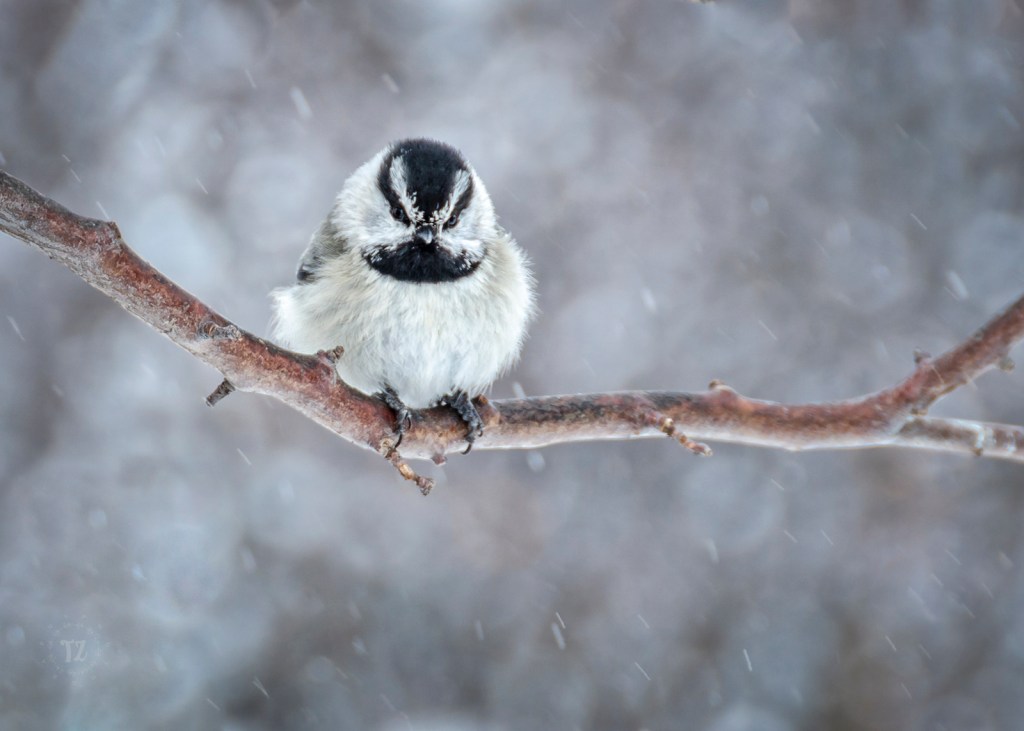



Our Mountain Chickadees come down to 2700 feet to join our regular Black Cappers, in the winter when their summer digs at 7000 feet above us in the higher North Cascades are a little on the cool side. Plus with the bears hibernating they know our feeder is back out. Both kinds seem to get along OK with few fights. We’re deep in the east side of these steep mountains, so it’s a short flight for them down to Lost River 5 miles above Mazama.
Hello my feathered friend.
Just joking
But Wow
I’ve had a similar experience that most people don’t know. Birds are amazing. Aren’t they?
Thanks for your love of NATURE
Enjoyed this article very much. In California low lands we have the Chestnut back chickadee. There antics at my feeder have many similarities to what you described. The other bird that has the habit of grabbing and flying off to a perch to eat is the titmouse. Both of these birds also have shown less fear of humans over a length of time, staying around the feeder even as I am watering or working in the garden…..both continue to feed their offspring well into adulthood.